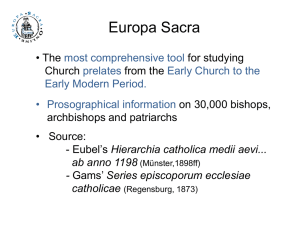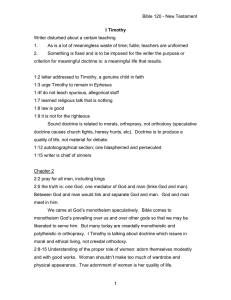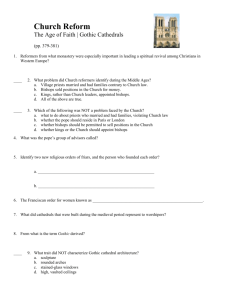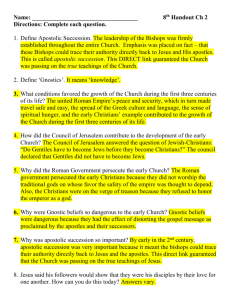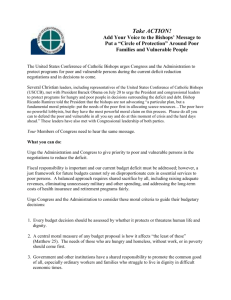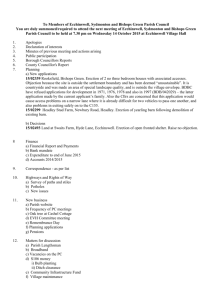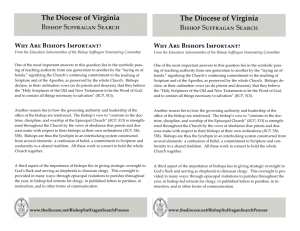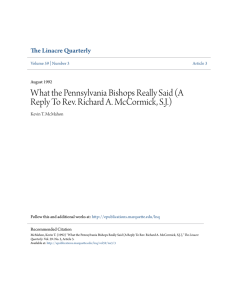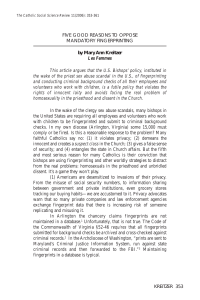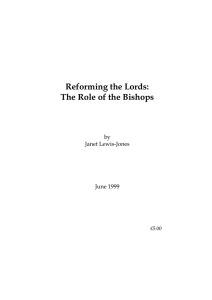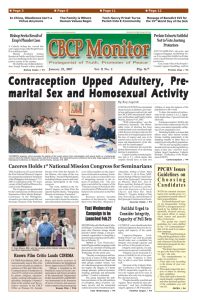Church History 101 Lesson 7 The Church Organizes Key Concepts
advertisement
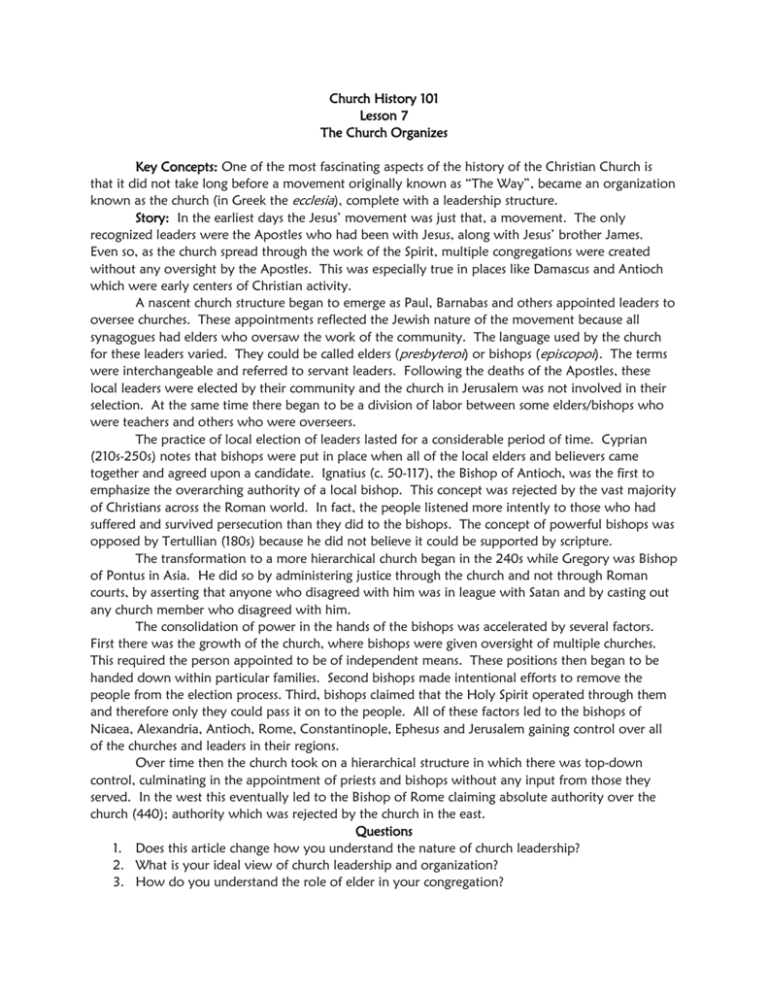
Church History 101 Lesson 7 The Church Organizes Key Concepts: One of the most fascinating aspects of the history of the Christian Church is that it did not take long before a movement originally known as “The Way”, became an organization known as the church (in Greek the ecclesia), complete with a leadership structure. Story: In the earliest days the Jesus’ movement was just that, a movement. The only recognized leaders were the Apostles who had been with Jesus, along with Jesus’ brother James. Even so, as the church spread through the work of the Spirit, multiple congregations were created without any oversight by the Apostles. This was especially true in places like Damascus and Antioch which were early centers of Christian activity. A nascent church structure began to emerge as Paul, Barnabas and others appointed leaders to oversee churches. These appointments reflected the Jewish nature of the movement because all synagogues had elders who oversaw the work of the community. The language used by the church for these leaders varied. They could be called elders (presbyteroi) or bishops (episcopoi). The terms were interchangeable and referred to servant leaders. Following the deaths of the Apostles, these local leaders were elected by their community and the church in Jerusalem was not involved in their selection. At the same time there began to be a division of labor between some elders/bishops who were teachers and others who were overseers. The practice of local election of leaders lasted for a considerable period of time. Cyprian (210s-250s) notes that bishops were put in place when all of the local elders and believers came together and agreed upon a candidate. Ignatius (c. 50-117), the Bishop of Antioch, was the first to emphasize the overarching authority of a local bishop. This concept was rejected by the vast majority of Christians across the Roman world. In fact, the people listened more intently to those who had suffered and survived persecution than they did to the bishops. The concept of powerful bishops was opposed by Tertullian (180s) because he did not believe it could be supported by scripture. The transformation to a more hierarchical church began in the 240s while Gregory was Bishop of Pontus in Asia. He did so by administering justice through the church and not through Roman courts, by asserting that anyone who disagreed with him was in league with Satan and by casting out any church member who disagreed with him. The consolidation of power in the hands of the bishops was accelerated by several factors. First there was the growth of the church, where bishops were given oversight of multiple churches. This required the person appointed to be of independent means. These positions then began to be handed down within particular families. Second bishops made intentional efforts to remove the people from the election process. Third, bishops claimed that the Holy Spirit operated through them and therefore only they could pass it on to the people. All of these factors led to the bishops of Nicaea, Alexandria, Antioch, Rome, Constantinople, Ephesus and Jerusalem gaining control over all of the churches and leaders in their regions. Over time then the church took on a hierarchical structure in which there was top-down control, culminating in the appointment of priests and bishops without any input from those they served. In the west this eventually led to the Bishop of Rome claiming absolute authority over the church (440); authority which was rejected by the church in the east. Questions 1. Does this article change how you understand the nature of church leadership? 2. What is your ideal view of church leadership and organization? 3. How do you understand the role of elder in your congregation?



